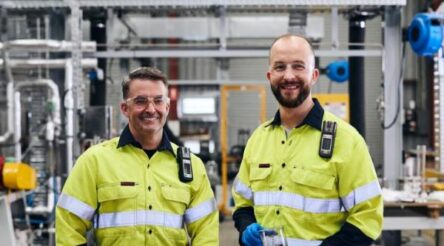What is the role of a team leader within Toyota?

By Eri Dennis, Consultant, Shinka Management
We all know team leaders play an important role within a manufacturing shop floor in shaping the team’s effectiveness. However, specific roles and responsibilities given to a team leader are often different from company to company. So, how does Toyota approach this? What is the role of a team leader within a Toyota final assembly plant? Certainly, this is one of the questions we often get asked. As this is the case, I took the opportunity to ask this very question to Toyota lean management guru and Shinka Management Senior ConsultantAkinori Hyodo during his recent visit to Australia. Hyodo-sensei is a long-time Toyota Production System leader and a veteran factory manager at the Toyota factory in Japan responsible for manufacturing the HiAce vehicle.
Shop Floor Management Team Structure
Before we take a look at any details of the role and responsibilities of a team leader, it is crucial for us to understand how Toyota structures the organization of their workforce on the shop floor. According to Hyodo-sensei, the HiAce plant’s entire production force is divided into a number of teams for each shift based on different shops (i.e. stamping, welding, paint shops) and assembly lines. Each team is typically made up of 15 to 20 people with a team leader at the top with a number of operators below. Immediately below the team leader is a sub-leader followed by relief and annual-leave persons as well as a trainer. In most cases, they are multi-skilled operators themselves who have at least four to five years of shop floor experience. While the relief person acts as back-up for when issues occur within the team’s operation, the annual-leave person is dedicated to take care of the work of operators on leave. The trainer is in charge of training the required standard work to the operators and makes sure that this is properly implemented on the line. Depending on the size and the functionality of the team, there may be a slight variation in this picture such as having two sub-leaders within a team who also take on the relief and annual leave personnel’s role concurrently instead and so forth.
An example of the Toyota shop floor team structure
The Principle of Abnormality Control
Either way, an important point for us to note here is that team leaders are not assigned to daily production line work and they are “free” from such tasks so that they can respond quickly when an abnormality occurs in the area they oversee. One of the key principles of the Toyota Production System is “abnormality control” and Toyota’s shop floor teams are structured with this in mind. Essentially, abnormality control means appropriate actions are taken in a prompt manner in order to respond in the event of an abnormal situation (any violation of standard method of operation) and team leaders are free to float around the shop floor to do exactly that. In the same light, operators are trained to call for assistance from the support team when an abnormality occurs. The support team may stop the machine or the line if the abnormality warrants it. It is essential that this idea of “abnormality control” is understood clearly and followed thoroughly amongst everyone on the shop floor and every team functions on this basis.
Team Leader Role and Responsibilities
So, we have learnt that Toyota’s shop floor team leaders can be described as “free floaters” and they make sure any abnormalities are controlled. Then, what specific roles and responsibilities do they have?
Team leaders have the responsibility of ensuring all aspects of safety, quality, productivity and cost reduction are fulfilled. Towards this aim, Hyodo-sensei says one of the biggest roles of a team leader is to monitor and control the genba. In English, genba is often translated as “the real place” or more precisely “the place where the actual work is done, or value is created”. For manufacturing companies like Toyota, genba essentially means their factory shop floor. Without fully understanding what’s really going on at the shop floor, team managers cannot fulfill their responsibilities. They monitor their team’s operation with particular focuses on 4M factors (man, material, machine and method) to detect any potential abnormalities and to identify matters to improve so that the operators can carry out their assigned standard work according to the plan.
As part of the team leaders’ daily routine, they spend the first 30 minutes to one hour of the shift to review any issues that occurred during the previous shift, confirm changes to 4M factors and go through the KPIs to fully grasp the state of the genba. They have all necessary data visualized on their management board and this can also be viewed and shared with other members of the team and factory.
During the course of the shift, team leaders dedicate themselves to respond to any issues immediately to enable good control of the shop floor production activities.
According to Hyodo-sensei, when asked by their higher management, Toyota’s team leaders can provide accurate answers to numerous questions regarding the latest operation and production on the spot. This shows their level of understanding of the shop floor.
Another key role of the team leader is to drive and manage kaizen within their team. As the gatekeeper of kaizen ideas from their teams members, they work with their team when necessary to suggest adjustments to ideas so that they will positively contribute to the team’s kaizen targets for the year.
Requirements and Desired Characteristics of a Team Leader
After understanding the team structure and the role and responsibilities of a team leader, the next question that comes to mind is how you can become a team leader.
There is a long list of criteria an operator has to satisfy before he or she can become a team leader within Toyota. The HR section keeps records of each employee with their years of experience, specific skills and training programs they have successfully completed etc. When suitable candidates are identified within the organization based on their individual record, they are approached by the HR section and encouraged to fulfill further requirements if they are interested in this career path. However, fulfilling further requirements is not the only thing candidates have to worry about. Whether they possess the right characteristics is as important as having a great performance record.
Hyodo-sensei points out three key characteristics that are desired for good team leaders. Firstly, possess the ability to use people effectively. When running a big operation like Toyota does, one cannot do everything by oneself. A good team leader has to be able to extract the best quality out of each member and use them for the benefit of everyone. That’s why having the ability to utilize people effectively, efficiently and comfortably is crucial. Secondly, have a positive and willing mindset. A good leader must hold an attitude of “give it a go” and “give them a go” and little fear of making mistakes. They must be adaptive and flexible and be able to guide the team in the right direction to move forward. Having a positive and willing frame of mind will provide a good foundation to do so. Last but not least, they must own the power to exercise leadership. People can assume a leadership role but without this important attribute, they cannot grow to be a good team leader.
Key Attributes of a Great Team Leader
To conclude my interview, I requested Hyodo-sensei to give some advice to aspiring young leaders. The advice he gave was simple and rather humbling – never forget a sense of gratitude and gain trust and support from those surrounding you. After all, a team is made up of different people and without their trust and support, you cannot maximize the team’s outcome. An autocratic approach doesn’t last long. Hyodo-sensei stressed this point by sharing a saying in Japanese, “Behind every great company is a great leader, behind every great leader is a great supporter.” This saying pretty much sums up Toyota’s approach and there is no doubt that the role of team leader on the shop floor is indispensable to the success of the company.
Eri Dennis is a Consultant of Shinka Management, a lean training and consulting firm with clients in over 50 countries. Eri is a regular leader of the Shinka Management Lean Japan Tour. Eri graduated with a Master of Arts in Japanese Interpreting and Translation from the University of Queensland and is NAATI accredited as a Professional Level Interpreter and Professional Level Translator.
@aumanufacturing Sections
Analysis and Commentary Awards Defence Manufacturing News Podcast Technology Videos










